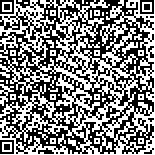| 摘要: |
| [摘要] 目的 分析正中神经重复外周磁刺激(rPMS)联合常规康复训练对痉挛型偏瘫患儿上肢和手功能的疗效。方法 招募2022年6月至2023年6月徐州市儿童医院康复科收治的痉挛型偏瘫患儿61例。采用随机数字表法将其分为观察组(30例)和对照组(31例)。两组患儿均进行常规康复训练,观察组在常规康复训练之前进行正中神经rPMS,对照组在常规康复训练之前进行正中神经伪刺激。分别于治疗前、治疗4周后通过Caroll上肢功能测试(UEFT)、组块测试(BBT)和复旦中文版脑瘫幼儿手功能分级系统(Mini-MACS)对患儿上肢和手功能进行疗效评定。结果 与治疗前比较,两组患儿治疗后抓握能力、协调性明显改善,且UEFT总分、BBT评分显著提高,差异有统计学意义(P<0.05)。治疗后,观察组抓握能力改善程度优于对照组,UEFT总分、BBT评分高于对照组,差异有统计学意义(P<0.05)。两组治疗前后Mini-MACS分级比较差异无统计学意义(P>0.05),治疗后,观察组Mini-MACS分级显著优于对照组(P<0.05)。结论 正中神经rPMS联合常规康复训练能有效改善痉挛型偏瘫患儿上肢和手功能。 |
| 关键词: 痉挛型偏瘫 正中神经重复外周磁刺激 上肢运动功能障碍 手功能 |
| DOI:10.3969/j.issn.1674-3806.2024.03.11 |
| 分类号:R 742.3 |
| 基金项目:徐州市卫生健康委科技项目(编号:XWKYHT20210539) |
|
| Analysis of the effect of median nerve repetitive peripheral magnetic stimulation combined with conventional rehabilitation training on upper limbs and hand function in pediatric patients with spastic hemiplegia |
|
WANG Min, QIU Aizhen, WU Ye, MENG Lulu
|
|
Department of Rehabilitation, Xuzhou Children′s Hospital, Jiangsu 221000, China
|
| Abstract: |
| [Abstract] Objective To analyze the effect of median nerve repetitive peripheral magnetic stimulation(rPMS) combined with conventional rehabilitation training on upper limbs and hand function in pediatric patients with spastic hemiplegia. Methods A total of 61 pediatric patients with spastic hemiplegia who were admitted to the Department of Rehabilitation of Xuzhou Children′s Hospital from June 2022 to June 2023 were recruited. The pediatric patients were divided into observation group(30 cases) and control group(31 cases) by random number table method. The pediatric patients in both groups received conventional rehabilitation training. The observation group received median nerve rPMS before the conventional rehabilitation training, and the control group received median nerve magnetic pseudo-stimulation before the conventional rehabilitation training. Caroll Upper Extremity Functional Test(UEFT), Box and Block Test(BBT) and Fudan Infant Hand Function Assessment(Chinese version)—Mini-Manual Ability Classification System(Mini-MACS) were used to evaluate the effects of upper limbs and hand function in pediatric patients with spastic hemiplegia before treatment and 4 weeks after treatment, respectively. Results Compared with those before treatment, the grasping ability and coordination of the pediatric patients in the two groups were significantly improved after treatment, and their UEFT total scores and BBT scores were significantly elevated, and the differences were statistically significant(P<0.05). After treatment, the improvement of grasping ability in the observation group was better than that in the control group, and the UEFT total scores and BBT scores in the observation group were higher than those in the control group, and the differences were statistically significant(P<0.05). There was no significant difference between pre-therapeutic Mini-MACS grading and post-therapeutic Mini-MACS grading in the two groups(P>0.05). After treatment, the Mini-MACS grading in the observation group was significantly better than that in the control group(P<0.05). Conclusion Median nerve rPMS combined with conventional rehabilitation training can effectively improve upper limbs and hand function in pediatric patients with spastic hemiplegia. |
| Key words: Spastic hemiplegia Median nerve repetitive peripheral magnetic stimulation Upper limb motor dysfunction Hand function |

